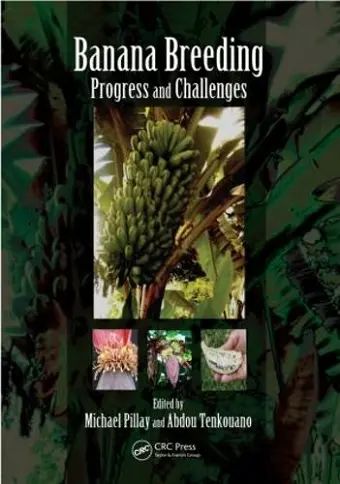Banana Breeding
Progress and Challenges
Michael Pillay editor Abdou Tenkouano editor
Format:Hardback
Publisher:Taylor & Francis Inc
Published:21st Jan '11
Currently unavailable, and unfortunately no date known when it will be back

With the current world population growth of 1.2%, the earth can expect to house 9-10 billion people by 2050. Food production, too, must increase to accommodate these numbers. Easy growing, high calorie, nutritious foods, such as bananas are the top priority as a solution to this imminent problem.
The first comprehensive compendium on bananas in recent years, Banana Breeding: Progress and Challenges provides in-depth coverage of all aspects of banana breeding and genetics, including biotechnology. A wide-ranging compilation of chapters by various experts, the book begins with a chapter on the general plant morphology of Musa. It continues with chapters such as Evolution and Genetic Relationships in Bananas and Plantains, Genetic Resources for Banana Improvement, Genomes, Cytogenetics, Flow Cytometry of Musa, and Genetics of Important Traits in Musa as well as two chapters that cover the major diseases and pests of banana.
The central focus of the book is encompassed in chapters such as Reproductive Biology, Breeding Techniques, Mutations and Cultivar Development of Banana, Biotechnology in Musa Improvement, and Genotype by Environment Interaction and Musa Improvement. The latter chapter offers tools for selecting both narrowly adapted and broadly adapted cultivars. The chapters on quality improvement of cultivated Musa and postharvest processed products provide researchers and teachers with information to improve quality aspects of banana along with information on how to reduce postharvest losses.
At last, a book that focuses on banana breeding. Not only are Musa breeding techniques, strategies and philosophies detailed in ways not done before, but there are also comparisons made with breeding three other clonally propagated tropical crops and the lessons they can teach banana scientists. In addition, there are chapters by various authors covering such topics as Musa genetic resources, morphology, pests and diseases, fruit quality, propagation and dissemination of hybrid cultivars, as well as the latest developments in biotechnology and genomics. They complement one another and point the way forward to the development of new cultivars with disease and pest resistance, while satisfying consumer expectations.
The chapters reflect the personal and practical experiences of the authors and the editors are to be congratulated on compiling an excellent new resource on bananas and banana breeding. This book provides basic as well as advanced information for those interested in learning more about banana, as well as those pursuing further research in the crop. Excellent bibliographies in many chapters provide a valuable documentation of the diverse research activity that has taken place in the past few decades and should be of use to serious scholars. I recommend this book to all interested in the genetic improvement of tropical crops, particularly those interested in banana breeding and production.
—Mike Smith, Experimental Agriculture, 2011
ISBN: 9781439800171
Dimensions: unknown
Weight: 861g
384 pages